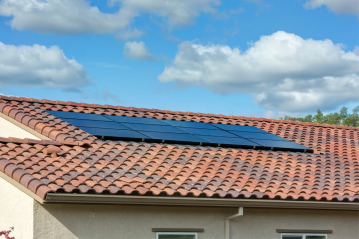
As homeowners increasingly turn to solar energy as a clean and sustainable power source, one crucial question arises: Is my house suitable for solar panels? Determining the suitability of your roof and understanding key factors can help you make an informed decision. In this article, we will explore roof suitability, the best roof materials for solar panels, assessing sunlight exposure, and the feasibility of installing solar panels on shaded roofs. By the end, you'll have a clearer understanding of whether your house is a good candidate for solar panel installation.
1. Is My Roof Suitable for Solar Panels?
Before diving into solar panel installation, it's important to assess the suitability of your roof. Consider the following aspects:
a) Roof Orientation: Ideally, roofs facing south receive the most sunlight throughout the day, making them ideal for solar panels. East and west-facing roofs can also be suitable, but their energy output may vary.
b) Roof Pitch: Solar panels perform optimally on roofs with a moderate to steep pitch, as it allows for better sunlight exposure and self-cleaning during rainfall. Flat roofs can also accommodate solar panels with proper mounting systems.
c) Roof Age and Condition: It's essential to evaluate the condition of your roof before installing solar panels. If your roof is nearing the end of its lifespan, it may be prudent to consider roof repairs or replacement before proceeding with solar panel installation.
2. What's the Best Roof Material for Solar Panels?
Solar panels can be installed on various roof materials. Let's explore the suitability of some common options:
a) Asphalt Shingles: Asphalt shingle roofs are commonly found in residential properties. They are generally suitable for solar panels and can withstand the weight and installation process. However, the shingles' lifespan should be considered, as re-roofing may be necessary before the next solar panel replacement.
b) Metal: Metal roofs are becoming increasingly popular due to their durability and longevity. They provide an excellent surface for solar panel installation, and their long lifespan ensures compatibility with multiple generations of solar systems.
c) Tiles: Clay or concrete tiles can support solar panels, but their installation requires additional care. An experienced solar installer can ensure proper mounting and sealing to prevent potential damage to the tiles.
d) Tar and Gravel: Flat roofs with tar and gravel can also accommodate solar panels. However, the installation may require specialized mounting systems to ensure stability and proper waterproofing.
3. How Much Sunlight Does Your Roof Receive?
The amount of sunlight your roof receives directly affects the energy production potential of your solar panels. Factors to consider include:
a) Shading: Assess any potential obstructions that cast shadows on your roof, such as trees, neighboring buildings, or tall structures. Shaded areas can significantly reduce solar panel efficiency, so it's important to minimize shading for optimal performance.
b) Solar Path: Evaluate the path of the sun throughout the year. Tools like solar path calculators can help determine the amount of sunlight your roof receives during different seasons. Remember, more sunlight means more energy production.
4. Solar Panels on Shaded Roofs
While shading can impact solar panel efficiency, it doesn't necessarily mean your shaded roof is unsuitable for solar panels. Here are a few options to consider:
a) Trim or Remove Obstructions: If possible, trim tree branches or consider removing obstructions that cause excessive shading. This can significantly improve the solar potential of your roof.
b) Microinverters or Power Optimizers: These devices can mitigate the impact of shading by optimizing the energy production of each panel individually. They allow the unaffected panels to perform optimally even if one panel is partially shaded.
c) Ground-Mounted Systems: If your roof isn't suitable for solar panels due to shading, a ground-mounted system might be an alternative. Ground-mounts can be positioned in a sunnier area of your property to maximize energy production.
Conclusion
Assessing the suitability of your house for solar panels is a crucial step in transitioning to clean energy. Consider factors such as roof orientation, pitch, and condition, as well as the amount of sunlight your roof receives. Different roof materials can support solar panel installation, but it's essential to evaluate their compatibility. If your roof is shaded, explore options like trimming obstructions or utilizing microinverters or ground-mounted systems. By understanding the unique aspects of your house, you can make an informed decision and harness the benefits of solar energy while reducing your environmental impact.
Related articles:

0 comments